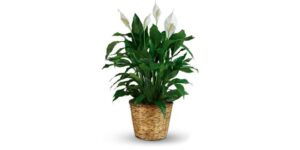Three years now after the Covid-19 pandemic and the number of people introducing house plants into their homes keeps growing.
There are a variety of indoor plants to choose from, and while some will reach for more easy-to-manage plants such as the monster or snake plants, there are those keen to put their green thumb to the test by going for rare, unique-looking plants such as the rubber plant.
From the succulents, Calatheas, and exotic orchids to the easy-going ZZ plant, if there is a trend that will be kept alive over the years is house plants.
Whether you’re looking to finally carve out a backyard garden or are simply seeking to add natural touches to your work-from-home nook, ‘tis the season to invite some plants into your life.
The wonderful thing regarding plants and caring for them can be as simple or as complicated as you’d like it to be.
To help you better understand how to go about this, we had a chat with Tonny Green, the sales and consultation representative at Builders, at The Waterfront Karen. Green, also known as the ‘plant whisperer’, says since the Covid-19 pandemic happened, homeowners have been approaching plants with more discernment.
“If looking for an indoor plant, opt for one that thrives in humid climates. Indoor plants require a low amount of light and water to thrive. Use summer’s intense humidity to your advantage and avoid overwatering or underwatering your plants,” advises Green, adding that where you place them also matters.
“The placement of an indoor plant will determine whether it will die or not, I make a point of advertising my customers to ensure that they research the plant’s original habitat because this will inform them where to place the plant – there should be a flow of air – as well as the size of the pot to get.”
So, how do you tell an indoor plant from an outdoor plant?
“Indoor plants tend to have very glossy leaves on the upper surface. The leaves are also broad, very few indoor plants have thin leaves and they rarely flower,” he adds.
People and plants are naturally connected. Human beings have an inherent connection with nature, according to the biophilia hypothesis, popularised in 1984 by naturalist and writer E.O. Wilson. More than three decades of research spanning the globe have confirmed the hypothesis and shown that natural environments increase positive emotions while decreasing negative ones.
“Plants bring relief in enclosed spaces, they can quickly improve mood, relieve stress and can have a huge restorative capacity,” says Green.
Below are some indoor plants you can consider
Mother-in-law’s tongue, also known as snake plant
It is one of the most popular and hardy species of houseplants. It features stiff leaves that range from six inches to eight feet tall, depending on the variety. Snake plants vary in colour but usually have green banded leaves and commonly feature a yellow border.
A multitasker, many people like the snake plant because it purifies indoor air by removing toxins such as formaldehyde, xylene and toluene.

Monstera
They are unique, easygoing houseplants whose dramatic leaves are adorned with dramatic hole formations. Monsteras are vining plants and love to trail over the pot or climb along a stake or trellis. They love bright, indirect light, but will thrive under fluorescent lights as well.
Orchid
Delicate-looking orchids are not as fragile as they appear. They will bloom for months and can live for years with little care. They prefer bright, indirect light (an East or West-facing window is best). Water once a week until it drains out of the bottom of the pot.
Money plant (Pothos)
Money plants are climbers that can grow up to 20 meters high (depending on the growing medium). They are easy to grow and require no extensive care. They have a special characteristic in that they can grow both in soil and water-filled bottles. However, you have to change water frequently if you choose to grow it in water. There is a belief that having this plant in your house brings good luck, wealth, happiness and prosperity.
Pink Anthurium
The heart-shaped leaves and pretty red, pink or white blooms of this plant make it a must-have. The flowers, which are actually modified leaves, show off for a couple of months. This sturdy plant is almost always in bloom.
Golden cane palm
Golden cane palms create an air of elegance and splendour, especially when grown indoors. They remind you of exotic lands far away. They make you feel as if you are on some wonderful palm-fringed beaches, without having to ever leave home. That’s the beauty of it.
It grows best in semi-shaded positions in humid parts of the house. These may include rooms where you use a lot of water such as a kitchen, bathroom or laundry room.
Spider plant
The spider plant is considered one of the most adaptable of houseplants and the easiest to grow. This plant can grow in a wide range of conditions. Browning of tips is one major problem you would expect to see. If you want better results, place them in bright, indirect light and they will thrive.
Black Prince Rubber Plant
This is a popular houseplant because of its waxy leaves and larger-than-life appearance. As a domesticated houseplant, rubber plants grow anywhere between six to 10 feet tall. This plant grows better in a brightly lit spot without direct sunlight.
Shamrock Plant
Shamrock plants bloom profusely with pretty, little star-shaped flowers. The plant’s foliage may be green or burgundy. Give it bright indirect light, and keep it slightly moist. Most species of shamrock, which grow from bulbs, go dormant a few times a year.
Stop watering and place the plant in a cool, dark place. When you see new growth, move your shamrock back into bright light and resume watering.
Credit: Source link